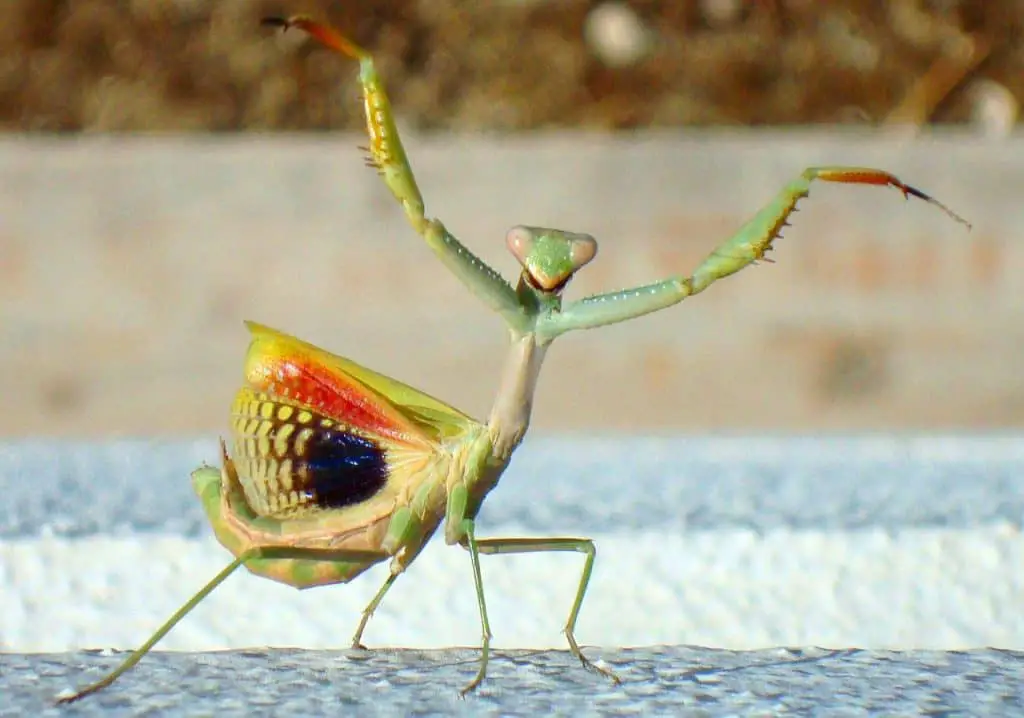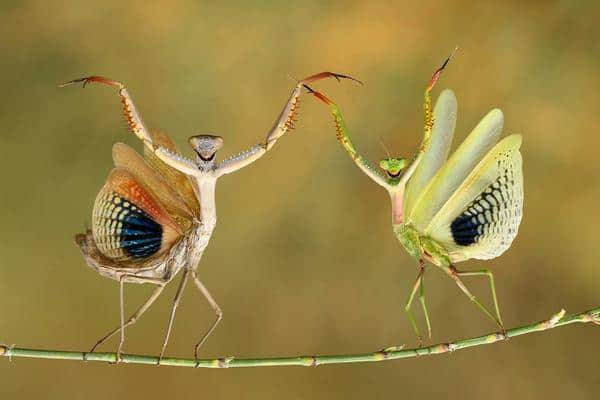Praying mantises, those captivating creatures of the insect world, have intrigued scientists and nature enthusiasts for ages. While their formidable hunting skills and unique physical attributes have been studied extensively, there is one behavior that stands out among them all—the mesmerizing sway. In this article, we embark on a journey to uncover the secrets behind the dancing mantis and explore the various reasons why do praying mantis sway.

Why do praying mantis sway?
In the hidden world of insects, there exists a captivating creature that not only mesmerizes with its extraordinary hunting skills but also enchants us with an enigmatic dance. Picture a tiny predator swaying back and forth, its delicate form moving with an elegance that belies its true purpose. So why do praying mantises sway? They primarily do this to blend in with their surroundings. When the wind blows, grass and leaves sway along with it. To camouflage as effectively as possible, mantises mimic this movement and start “dancing” too.
But there’s more to their behavior than just this. Let’s dive in and explore the fascinating world of these insects to uncover more of their secrets!
1. Praying mantis sway to see better
The rhythmic back-and-forth motion of praying mantises serves a fascinating purpose—it improves their depth perception of objects that are further away. By swaying, mantises gain a unique perspective, allowing them to assess their surroundings with enhanced visual acuity. It’s as if they are saying, “What the heck is that? Let me look from this side, then from that side, to figure out if it’s food, a predator, or simply a curious human zipping by.”
This was discovered in a groundbreaking experiment conducted at Newcastle University, scientists sought to understand how praying mantises perceive their environment. They took an innovative approach by fitting tiny 3D glasses on these remarkable insects and exposing them to a series of videos featuring moving dots against matching backgrounds.
To the astonishment of the researchers, the mantises responded to the moving dots with remarkable precision, much like a cat chasing a laser pointer. This study provided crucial insights into the mantises’ hunting strategy, confirming that they rely on motion to track and capture their targets. The swaying behavior observed in mantises can be seen as an extension of this motion-based perception, allowing them to gather crucial depth information and precisely locate their prey.

2. Mimicking the wind to blend In
The dance-like swaying of mantises is not only a visual spectacle but also a clever camouflage tactic. By mimicking the movement of leaves or branches swaying in the wind, mantises seamlessly blend into their environment. This deceptive swaying helps them avoid detection by potential prey, making it easier for them to ambush unsuspecting victims. It’s a mix between “I am a leaf blowing in the wind; do not notice me” and a strategic maneuver to remain hidden in plain sight.
I have a collection of praying mantises and I’ve observed that when they focus on their prey, they tend to remain motionless. However, when I blow air towards them, they start swaying. This behavior is a prime example and offers the best explanation for why they do it. As top-notch predators, they can adapt to external factors to successfully capture their food.
3. Attracting females with Mantis Dance
In the world of mantises, the swaying behavior takes on a romantic twist. Male mantises employ their dance moves as a form of courtship display to attract females. Studies have shown that females often respond more favorably to males exhibiting a consistent and rhythmic sway. This dance-like behavior conveys vital information about the male’s fitness, health, and readiness to mate. The mantis dance becomes a visual language, ensuring successful reproduction for the species.
4. Preparing for the jump
The swaying motion of mantises is not just an elegant display; it also serves a practical purpose. Before leaping into action, mantises utilize the swaying motion as a means of building momentum. By gently moving back and forth, they align their multiple body sections, ensuring a coordinated and accurate jump. This helps prevent miscalculations that could result in a face plant or an awkward tumble.
5. Praying mantis dancing to look tough
Praying mantises have an ingenious trick up their sleeve when it comes to deterring potential predators. By swaying side to side with their forelegs spread wide, they create an illusion of larger size and intimidation. This menacing display serves as a warning to would-be attackers, signaling that they are not to be taken lightly. The dance of the praying mantis, with its wide-legged stance and rhythmic sway, showcases their ability to look tougher and more formidable than their actual size might suggest. This strategic behavior adds another layer to their survival toolkit, allowing them to ward off potential threats and ensure their own safety in the intricate dance of predator and prey.
6. Praying mantis dance just to look adorable and cute
While we explore the intriguing reasons behind the praying mantis’ dance, let’s not overlook the possibility that they might be dancing simply to look adorable and cute. Imagine these tiny insect maestros swaying and grooving, channeling their inner dance prodigies, all in the name of cuteness. Perhaps they’re trying to win over our hearts with their miniature dance moves, leaving us utterly charmed by their insectile cuteness overload.
But don’t take my word for it! To truly appreciate the whimsical world of praying mantis dance, I encourage you to watch the delightful video showcasing these enchanting creatures in action.
Conclusion
The enigmatic dance of the praying mantis reveals a world of wonder and intrigue. Through their swaying behavior, these remarkable insects showcase their adaptability and survival strategies. From enhancing depth perception to camouflaging with their surroundings, attracting mates, and preparing for precise jumps, the mantis dance embodies the complexity of their existence. Let the dance of the praying mantis remind us of the beauty and ingenuity found in even the smallest corners of our natural world.